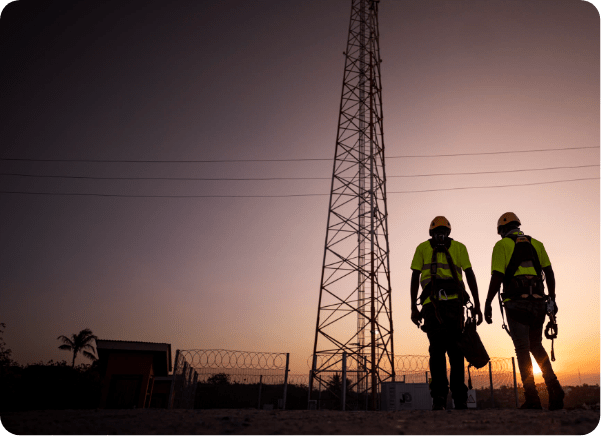Telecoms Infrastructure: Pandemic Pressure Leads to Industry Innovation
From designer face masks to socially-distanced dates, much has changed about how we live now. As we settle into our ‘new normal’, many of us in business are taking stock of the last two years, and realising how differently various industries have been impacted.
In the first year, for example, Zoom shares rocketed by some 600%, while travel, hospitality, restaurant and hotel companies were shuttered and hundreds of thousands of people sadly lost their jobs. In our field of global telecommunications, increased demand meant unprecedented levels of pressure on delivery, and a real push towards new and improved infrastructure.
In the initial months, as millions of households rapidly transitioned to working, studying and socialising remotely, “internet usage rose by 70% and tasked networks that, prior to this point, were working fairly efficiently,” according to Forbes. Getting and staying connected – for, say the duration of a work call, college class or blockbuster movie – became vital, generating increased average revenue per user (ARPU). Some providers such as Google and T-Mobile donated WI-FI hotspots to households and students struggling with digital connectivity.
A little like plumbing, most people don’t think about telecoms infrastructure until the taps stop working. Now, with so many day-to-day activities relying on seamless connectivity, the eyes of the world were suddenly on our industry in a way that they had never been before. This led to positive effects, including increased public and investor buy-in, as terms such as bandwidth, traffic and fibre optic cables became part of general conversation.
Urban infill sites were prioritised and the planned roll-out of 5G was accelerated, with Ericsson increasing its forecasts for 2020 global 5G subscriptions to 190 million, to 2.8 billion by 2025, all the way to 4.4 billion in 2027, when “around half of all mobile subscriptions will be for 5G”. The Swedish telecoms titan noted that “it is clear that underneath the numbers lies a continuous change in how we act, live and work.”
Figures like these were bound to catch investors’ attention, particularly those casting around for opportunities in more robust markets. Their newly-focused interest in the sector has generated a lot of market movement, with some major purchases, sales and mergers hitting the headlines. This helps to keep capital flowing, paying for ongoing research and development as well as increased coverage in new territories. It is also leading to improved portfolio management, with the help of international asset support providers such as Delmec.
All of this has proved that telecommunications are a vital part of modern life, and a key element of the global economy. The COVID-19 pandemic ignited an explosion of demand, but this is unlikely to slow down with the introduction of AI-led services such as virtual reality entertainment, telemedicine and autonomous driving. It’s imperative therefore that users, towercos, MNOs, investors and service providers continue advancing our telecoms infrastructure, technology and coverage at pace – we’re all stakeholders in this new, fully-connected world of ours.


